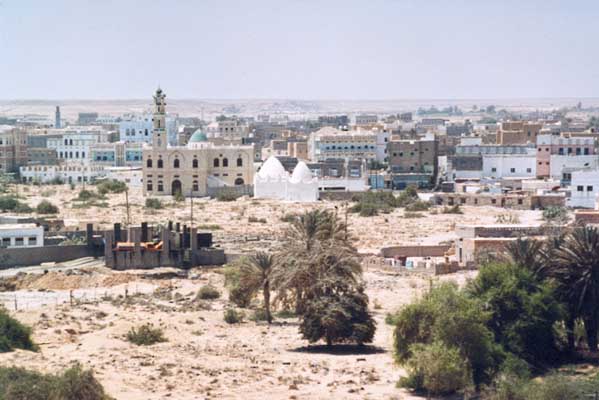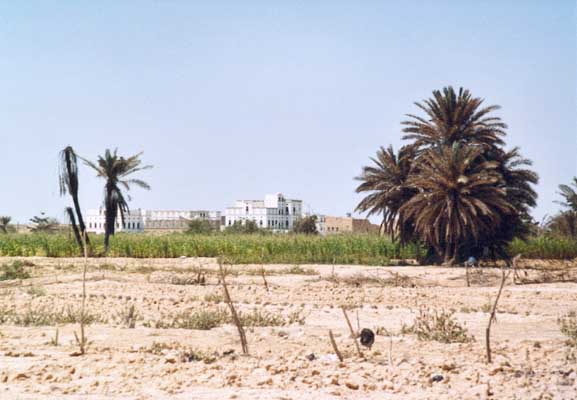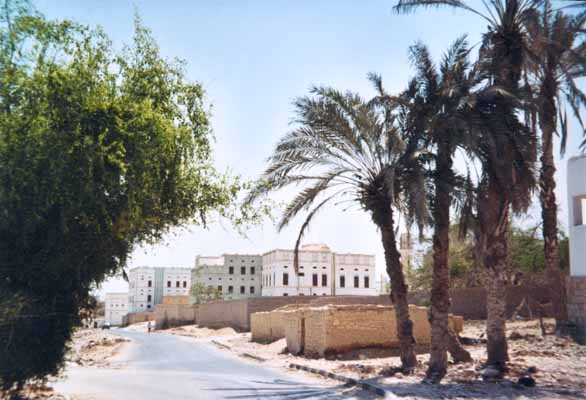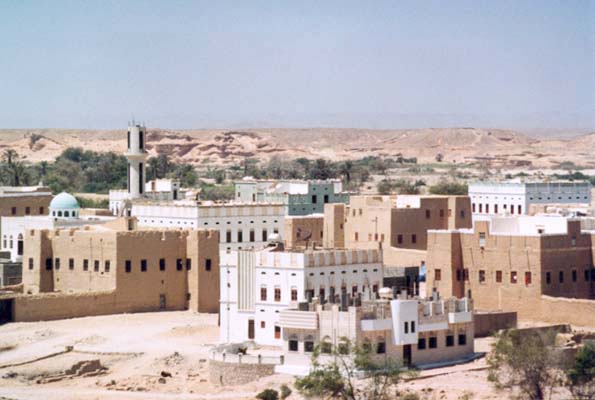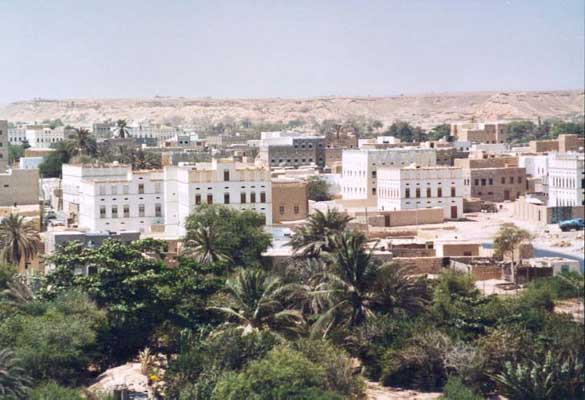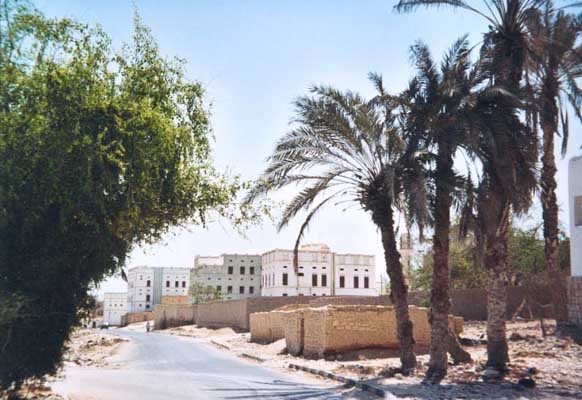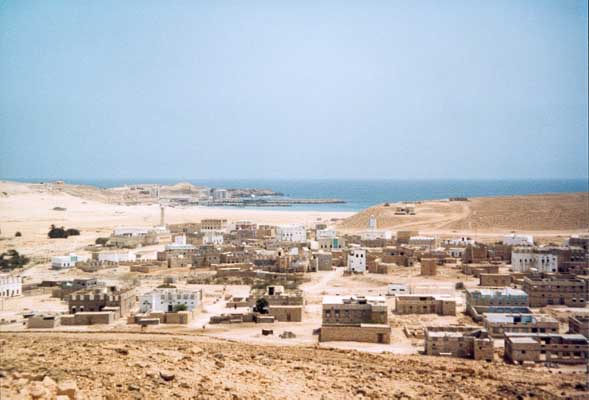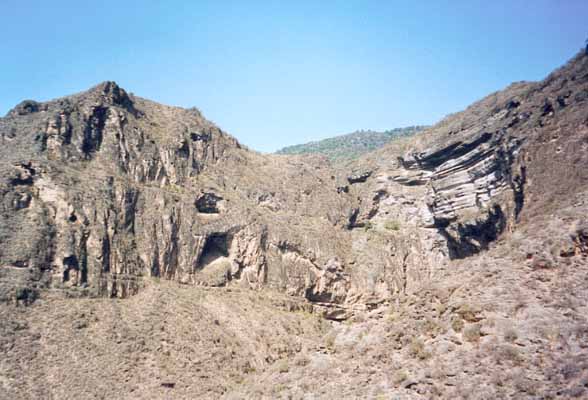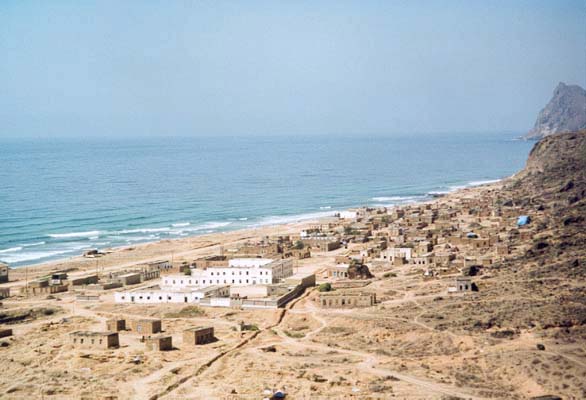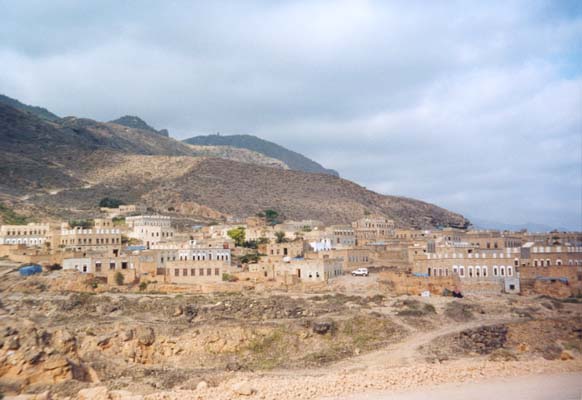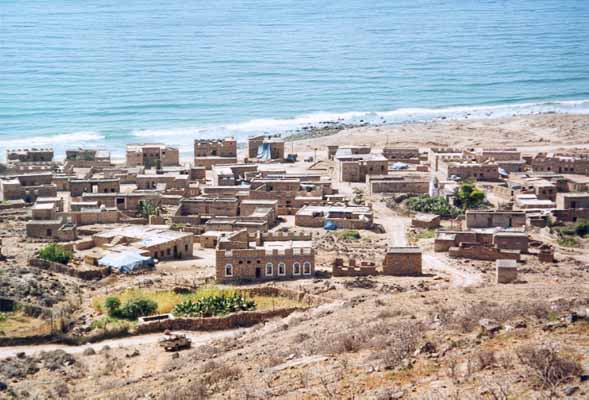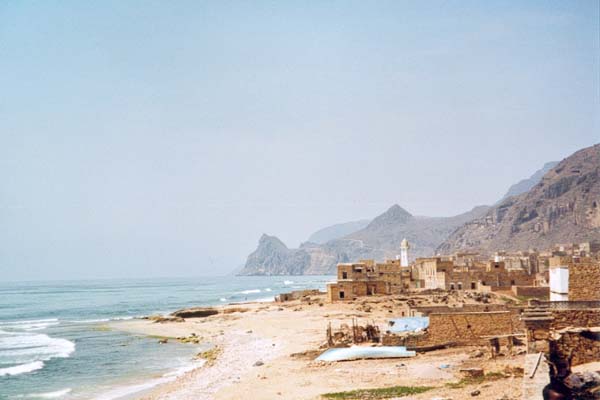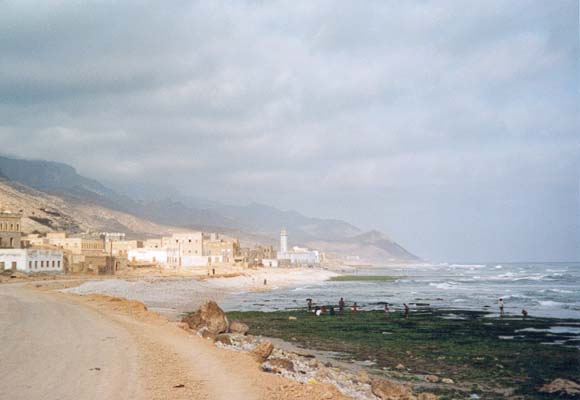Dr. Alexander Sima †
Fieldwork in Yemen
Report on my first journey to the province of Mahra/Yemen in September/October 2001
(Dr. Alexander Sima †)
I started the work on my post-doctoral research project ("Habilitation"), the description of Sharqiya-Mehri dialects (v. below), on safe ground and perused diligently the three volumes of Mehri texts of the southern-Arabia expedition and Thomas M. Johnstone's recently published texts from the Omani Najd. And not earlier as our Mehri lecturer Askari Hugayran Saad arrived in Heidelberg in April 2001, I had the opportunity to listen to the mute texts. The famous laterals underwent a metamorphosis: Formerly pure textbook-entities, they assumed a phonetical reality. Mr. Saad spent his childhood and youth in the mountains north of Hawf and in Djodeb and lives now with his family in the capital of the province of al-Ghaydha. Like most of the inhabitants of Hawf he was brought up bilingual -Hobyot and Mehri- and learned Arabic in high school. Because of that he forgot in time his Hobyot, especially after he moved to al-Ghaydha. Now he is able to understand Hobyot, but can not speak it anymore. In Heidelberg Mr. Askari recorded several Mehri texts onto tape; you can listen to some of them on this site.
On 18. 9. 2001 I took a flight via Dubay to Sanaa, the capital of Yemen. Having purchased a ticket for the national flight from Sanaa to al-Ghaydha, the capital of the province of Mahra, I was able to go to al-Ghaydha on Friday, the 21st of September. The Yemenia-airplane was full of Mehri people on their return from a bulk-purchase in Sanaa and northern-Yemenite officers, who reluctantly had to go back to their work after a short holiday at home. The former started to laugh at my first words in Mehri, the latter simply shook their head.
There were no restrictions for European people in Yemen in September - unfortunately it changed because of the American attack on Afghanistan - and so I arrived without any difficulties in al-Ghaydha. My teacher Askari Saad arrived already a month earlier at his home and was waiting for me. The first two weeks we spent in al-Ghaydha, after the revolution the capital of the recently formed province of al-Mahra. After the downfall of the sultan, al-Ghaydha surpassed the former capital Qishn: Being an insignificant village it turned into an upcoming small town with an enormous building activity. Around the small historic center new townships were built, what gives a somehow confusing impression (all the more as they are lacking street names). But a small part of the inhabitants was actually born there: In al-Ghaydha there live not only Mehri people originating form all parts of the province, but also Yemeni Arabians (and Indian traders, Ethiopian and Somali refugees and three Russian physicians with their families!). Al-Ghaydha is not, as it is commonly said, situated close to the shore and has therefor neither harbor nor fishing industry. Most impressive are the countless seats of ministries and other governmental buildings, that have been erected very fast in the past years. Besides al-Ghaydha has an airport (connection to Sanaa and Aden twice per week), a hospital, high schools and some sort of small university. Right at the shore lies the fishing village Mhayfif, that can be reached by car in about a quarter of an hour and provides the town with fresh fish daily.
Al-Ghaydha - being situated right in the middle of Mahra shore - is a good starting point for a journey to both the east and west part of the province.
Starting from al-Ghaydha I made a trip to the west to the coastal towns Dabot and Nestawn. In particular Nestawn, located in a bay surrounded by mountains, is a beautiful village. It can be reached in about 45 minutes by a taxi cab. Nestawn has one of the rare natural harbors of the south Yemeni coast. The harbor itself is strictly guarded by the military forces, and everyone is searched entirely before entering and has to promise over and over again not to take any photographs. Having set foot on the harbor you are left wondering about what has to be protected here in such a strict manner: There anchor a Dhow from Oman, a fishing boat from Soqotra and two boats of the Yemeni coastguard. At the shore the buildings of the port authorities and empty depots are left to decay and rust. In Nestawn the asphalt road ends, so that going to the west to Qishn and Sayhut you have to take a four wheel drive car to cope with the gravel road.
The last one and a half weeks I spent in the east part of Mahra, the so called Sharqiya, the actual destination of my journey. It is in many ways difficult to get there: But on the first 60 km, from al-Ghaydha to Fatk, there is an asphalt road, and for the most part, leading through mountainous regions, about 110 km, we had to cover a risky gravel road. Moreover there is no public conveyance to the east, what makes it necessary to go and find someone who might go there and take you with him. So we stood three days in vain waiting at the center of al-Ghaydha for someone heading for the Sharqiya. Finally on the forth day we found a lorry, that should take two camels and a cow to a wedding in Hawf. One of the camels died after a few miles, what again caused a considerable delay of our journey. First we came to the village of Abri, a bit towards the north, then along the coast by Irub and Feydemi to Fatk. The coastal region of al-Ghaydha measuring several kilometers in diameter grows more and more narrow going to the east, so that in Fatk the mountains nearly reach the shore and the coastal region is but a few hundred meters wide. Having left Fatk, there is a gravel road winding its way through the mountains to Damqawt, an ancient town, or rather a village, that is already mentioned in an inscription of the 4th century B.C. It is situated on a hill (a Tell?) in the center of a small bay, surrounded by black mountains. The clouds rising from the sea gather at the mountains, what gives this scenery a terrific and sombre impression. Then the track led us through the mountains again, where our lorry broke down at most of the bends. When we got out the mountains, finally, after three hours, suddenly appeared a coast plain about 500 m wide and 10 km long: The Sharqiya. This is how the administrative district of Hawf is called in common speech. Besides the isolated Damqawt I saw but from a distance when we drove past it, Hawf encloses the five nearby costal villages Rehen, Djerdifot (picture 1), (picture 2), Djodeb, Hawf and Abri, that form the Sharqiya. The central and main town is Djodeb; it has a small suq, a hospital, a school an a hotel. Immediately behind the villages steeply rise the mountains. The soil of the plateaus is cultivated. The annual rainy season in July and August makes it possible to sow and harvest millet, cucumber and nowadays also tomatoes. Besides the inhabitants of the costal villages live on fishing and smuggling to the nearby Oman. In the mountainous region north of Hawf to the Omani border (about 10 minutes by car) evergreen dense woods can be found. There people speak Hobyot; they live in scattered cabins, cultivate the soil and breed cattle and goats.
Compared to the "urban" al-Ghaydha life in the Sharqiya is quite humble. In theory there is electricity on every other day, but in practice it often is not. After dark at about 6 PM it is nearly impossible to leave the house because of the complete darkness that covers the region. A positive effect is, that no-one has a TV (and I hope it will not change). There are but few private cars and a public conveyance does not exist at all.
The linguistic findings in al-Ghaydha and in the Sharqiya
In al-Ghaydha it is possible to hear all Mehri dialects for a lot of Mehri people from all parts of the province live there or come for shorter period to work or to pay a visit to relatives. So I was not only able to work with immigrants from the Sharqiya, but I managed to record onto tape also Bedouin dialects from the interior and even several hours of the Qishn dialect. It is far more difficult to work on the old dialect of al-Ghaydha, because no indigenous people could be found.
But a considerable amount of changes regarding the social status endanger the Mehri language:
a) Since al-Ghaydha became a capital a lot of Arabians from the north and south of Yemen started to work there. Usually they have higher jobs: The teach at schools or "universities", are governmental officials of middle or high rank, officers, physicians, technical staff etc. These people normally do not speak a single word of Mehri, even if they live in Mahra for more than 20 years! In case a Mehri wants to talk to them, what happens quite frequently, a good knowledge of the Arabic language is indispensable.
b) In public governmental life only Arabic is used. Mehri is officially non-existent - in the northern parts of Yemen no-one knows about a non-Arabic language being spoken in Mahra. And since Mehri is but a spoken language, it is not held in high esteem. Therefor the inhabitants are forced towards using a foreign language in many also important parts of their lives.
c) All kind of media exclusively make use of the Arabic language: Of course TV - despite of the times of power failure running in an average Mehri household from half past six in the morning until midnight - is Arabic. Every kind of music is Arabic; even Mehri singers never make use of their mother tongue. It took my a lot of time to find in the numerous record shops in al-Ghaydha three cassette tapes with Mehri texts and songs. Newspapers are of minor importance, but also written in Arabic.
d) The public schools use Arabic, and even at "university" Mehri is not taught. The most evident consequence is, that almost no-one is able to speak pure Mehri for a longer time: The speakers keep changing from Mehri to Arabic. It even occurs that both languages are mingled in one sentence. When I recorded Mehri samples onto tape the speakers had to concentrate not to fall back to Arabic (what nevertheless happened frequently). Often it gave me the impression, it would be easier for them to speak Arabic than Mehri.
The chance of survival is not very high in this case - most concerning is the fact, that the Mehri people do not attach importance to their linguistic and cultural identity. It is significant, that the Mehri-Museum in al-Ghaydha has been closed for the past ten years for "restoration". The youth dreams about earning a lot of money in the gulf countries and thinks a knowledge of Mehri to be of no use at all and even being an obstacle, for it caused them a lot of trouble to learn Arabic at school.
In the Sharqiya the situation of Mehri is not as alarming: Due to the isolated and almost inaccessible position and the absence of TVs the influence of the Arabic language is not as high. The percentage of Arabian immigrants is minimal and the public schools do not have yet (!) the same devastating effect. The way of life is traditional and is based on farming, cattle breeding and fishing. Although everyone I met spoke Arabic, it has no effects on everyday life.
A dialectological problem is the interference with Hobyot: The Hobyot speaking population leaves more and more their settlement area in the mountainous regions and settles down in the coastal villages of the Sharqiya or the capital al-Ghaydha and learns to speak Mehri besides Hobyot. The majority of the Mehri people understands Hobyot anyway. They think Hobyot to be a somehow strange Mehri dialect. Due to the vicinity of Mehri and Hobyot the Mehri dialect of the Sharqiya has a certain Hobyot sound - at least according to the inhabitants of the Sharqiya themselves and the people from al-Ghaydha, who use to tell jokes about it. Besides the village of Hawf in the east, at most parts inhabited by Hobyot immigrants, also the "old" dialect of Rehen is "endangered" by Hobyot. Unfortunately I was able to record but little Hobyot texts and could only draw a rough sketch of the dialect of Rehen. For little is known about Hobyot, it will not be easy to prove an interference with Mehri: Here the progress in Mehri dialectology depends on the research in Hobyot.
First results of my field-work and survey on future duties:
The most important result of my journey are the more than 10 hours of tape-recordings, on which my further research is funded. They contain two hours of the Qishn dialect, half an hour of Dabot and Nestawn (but not of an excellent quality), about half an hour Bedouin dialects, and seven hours of Sharqiya speakers.
The western dialects of Qishn, Nestawn and Dabot differ obviously from the eastern dialects (e.g. the interdentals are substituted by the dentals); but the difference between the dialects of al-Ghaydha and the Sharqiya has not become clear to me. The dialect of the Sharqiya is, minor diversities excepted, quite uniform. Only the dialect of the indigenous inhabitants of Rehen, also a favorite subject for jokes, contrasts. I planned to record this dialect onto tape and found a good speaker, but there were problems to fix the date. But I was able to note down the most striking characteristic features.
These are my future duties:
a) Recordings of indigenous inhabitants of the al-Ghaydha, to form a contrast to the dialects of the Sharqiya.
b) The dialect of Damqawt seems promising for the village is very isolated. But unfortunately this forms also a great difficulty, as is the lack of a hotel and public conveyance.
c) The "old" dialect of Rehen has to be recorded, because it forms a group of it own.
d) Last but not least Hobyot is one of the Semitic languages, that have not yet been subject of detailed scientific research; further work is therefor indispensable.



